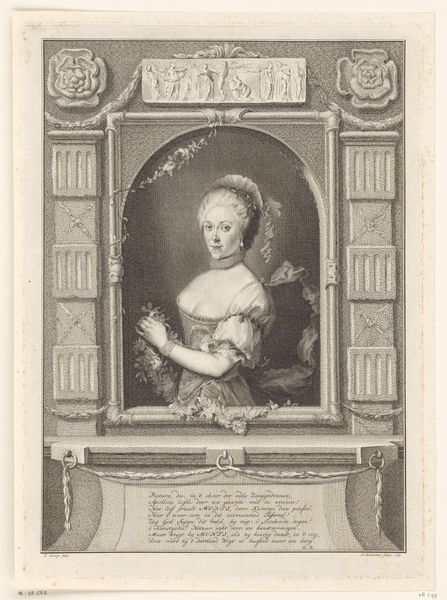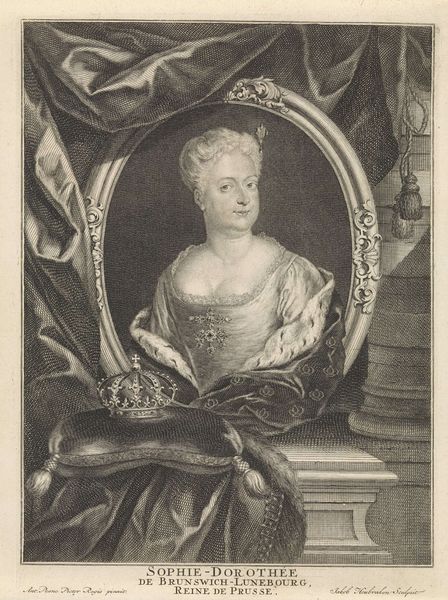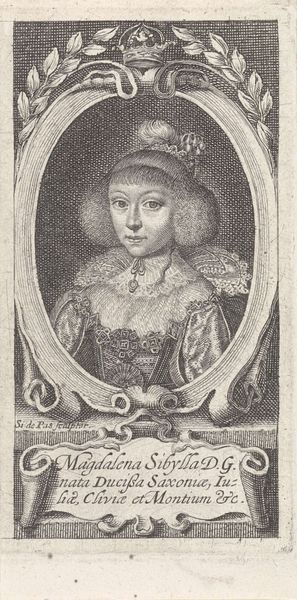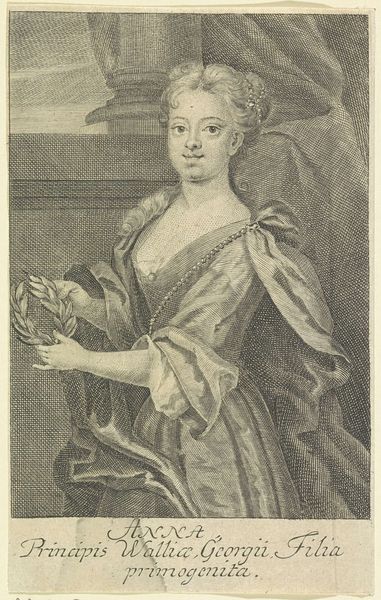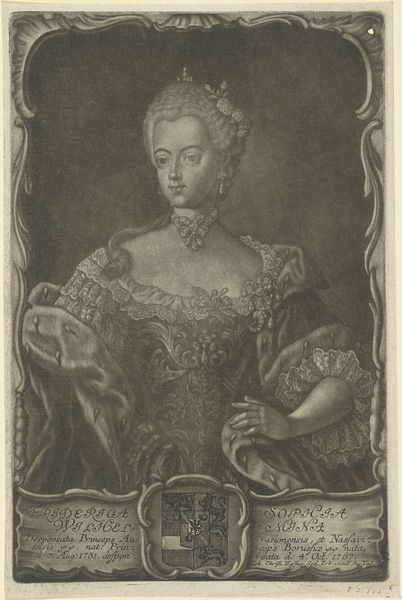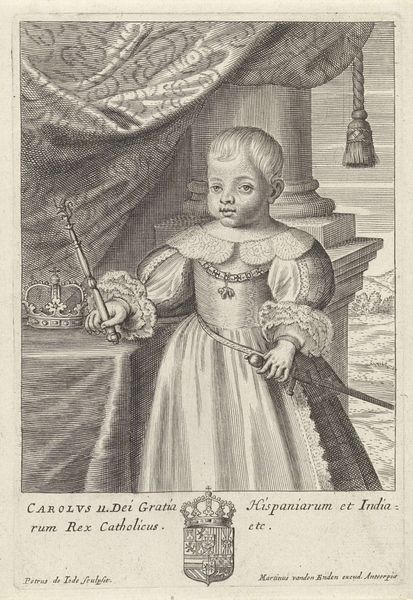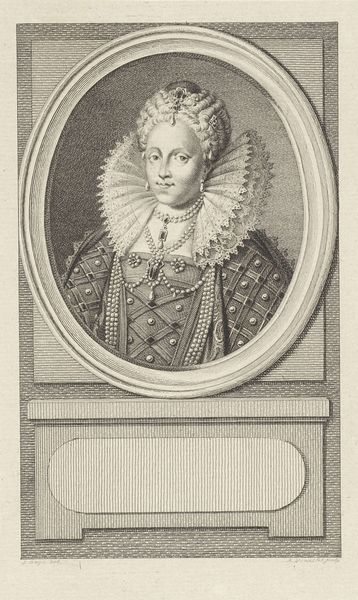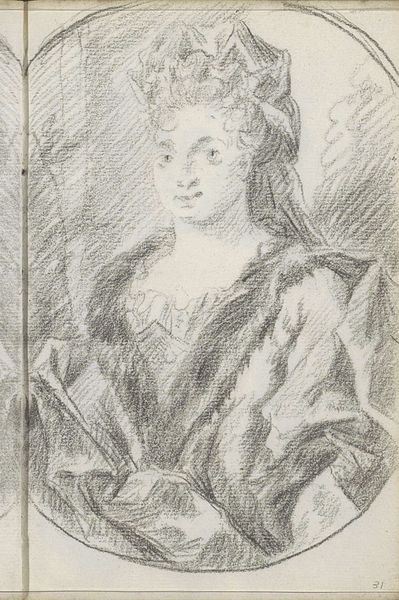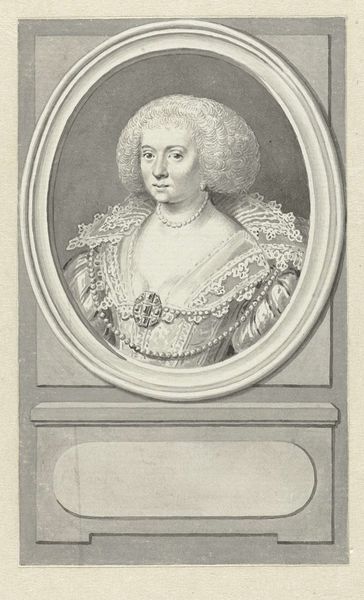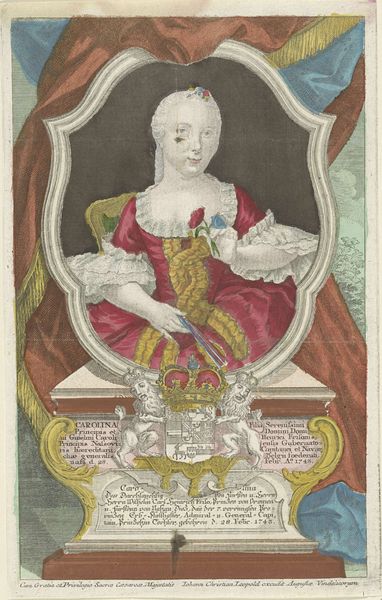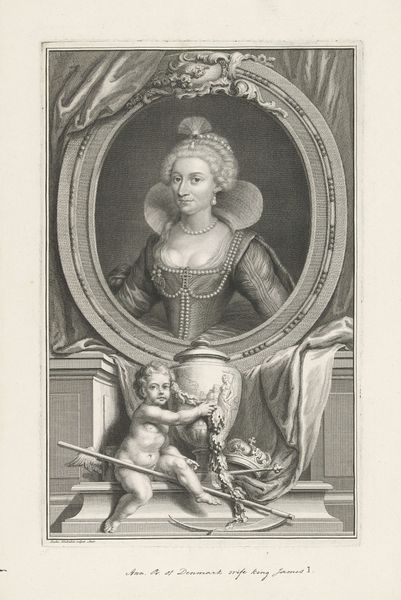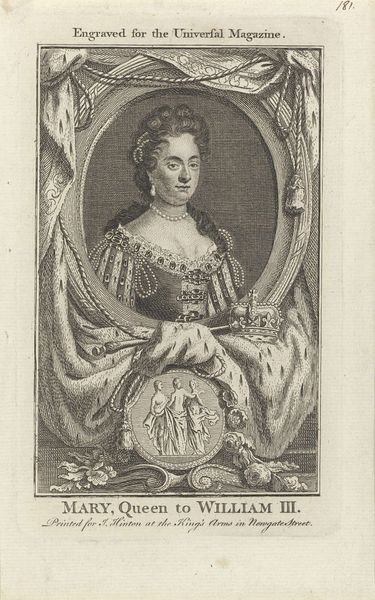
engraving
#
history-painting
#
engraving
#
rococo
Dimensions: height 88 mm, width 52 mm
Copyright: Rijks Museum: Open Domain
Curator: This engraving, created by Gustav Andreas Wolfgang in 1756, presents us with a portrait of Wilhelmina of Prussia, and it is held at the Rijksmuseum. Editor: It’s remarkable how delicate the lines are! It gives a sense of fragility to the image, a sort of rococo delicacy fitting to the era, I would say. It also looks more serious than other images I associate with the rococo style, though. Curator: Rococo in portraiture aimed to capture likeness while reinforcing social status, Wilhelmina’s aristocratic bearing is subtly emphasized. This was crafted during a period when Prussia was asserting its power on the European stage. Representing the royal family through prints served political objectives, consolidating familial prestige. Editor: Indeed. I was also immediately drawn to how Wolfgang used texture—the ruffles and fur are exquisitely detailed. The formal construction using very delicate, very light lines and hatching gives it depth, doesn’t it? It creates a strong sense of presence for the subject. Curator: This highlights Rococo's visual rhetoric in legitimizing power. Prints were important in disseminating a controlled image of the royal family, reinforcing an image of sophistication and dynastic power. Its artistic value intersects with socio-political functionality. It provided accessibility to portraiture among emerging middling classes too. Editor: I agree! But back to technique... There’s this interplay of light and shadow in such delicate form—almost like whispered suggestions rather than statements of form. Even the frame within a frame, inscribed with text. Curator: An apt observation. These details reveal more than aristocratic representation; they narrate the political utility of imagery. The portrait as a medium served specific social and political functions. Editor: Exactly. Analyzing it closely allows one to appreciate how intertwined art and politics were during that period, and just how artists skillfully operated within those dynamics, even in more unassuming portraits of children.
Comments
No comments
Be the first to comment and join the conversation on the ultimate creative platform.
